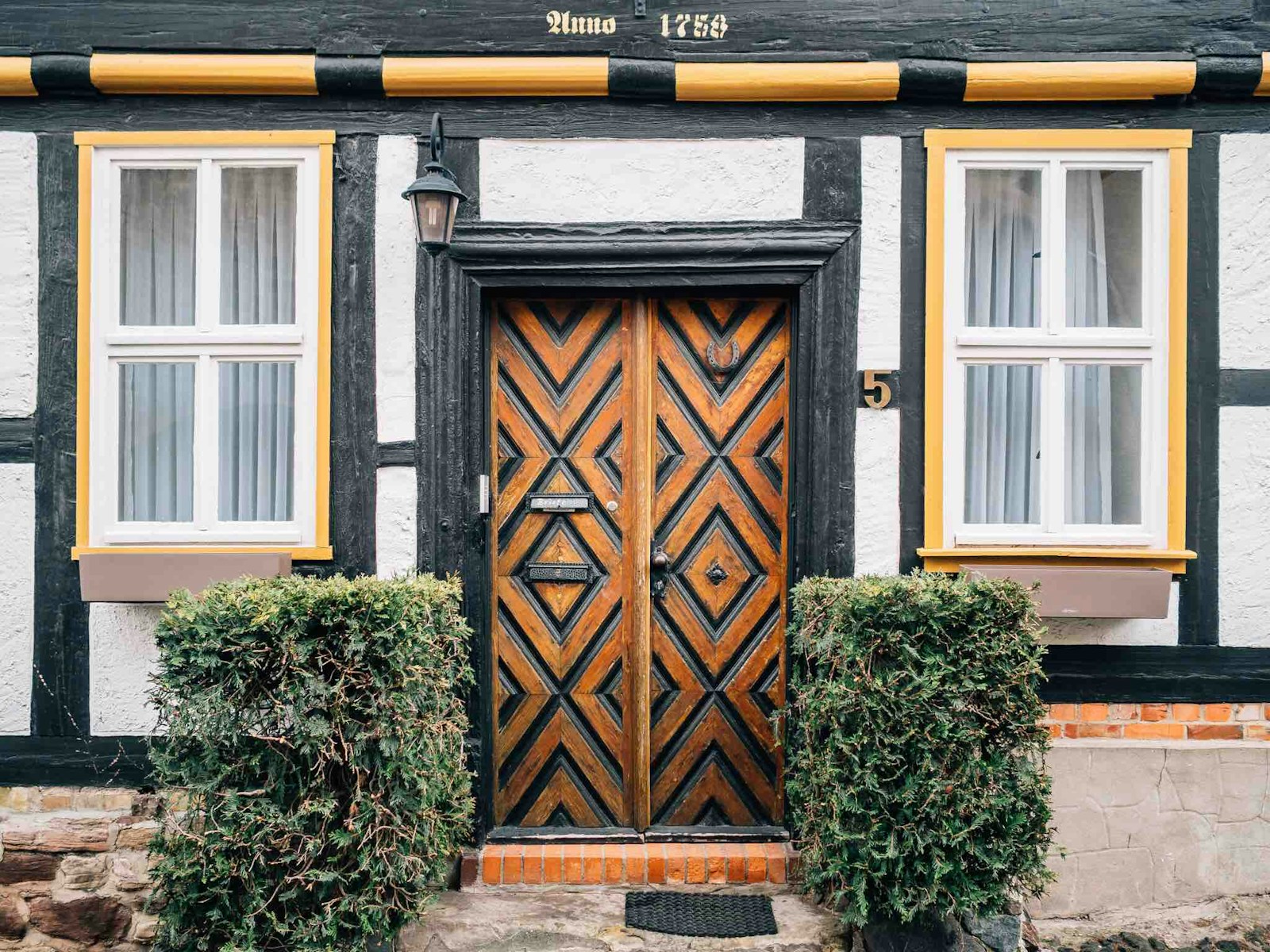
puerta

door
A door is a hinged barrier used to close off an entrance. It usually has a handle that you use to open it.
Example sentences using: puerta
La puerta está cerrada.

The door is closed.
In this phrase, 'La puerta está cerrada', we are using the verb 'estar' which, among other uses, mentions a temporary condition of an object or person. Here it's indicating the status of the door as being closed.
¿Dónde está la puerta?

Where is the door?
Here '¿Dónde está la puerta?' is a basic structure for asking about location in Spanish. The verb 'estar' is used for location of physical objects, in this case asking for the door's location.
Su habitación tiene una puerta azul.

His room has a blue door.
In 'Su habitación tiene una puerta azul', 'tiene' indicates possession. The phrase talks about the characteristic of someone's room, pointing out that the door is blue.
Ella abre la puerta.

She opens the door.
This is a simple sentence structure where it shows a subject 'Ella', a verb 'abre', and an object 'la puerta'. Here the verb indicates an action that the subject is performing on the object.
Cierre la puerta, por favor.

Close the door, please.
'Cierre la puerta, por favor' is a phrase in the imperative mood, which is used to give orders or instructions. Including 'por favor' at the end makes the request more polite.
La puerta es de madera.

The door is made of wood.
In 'La puerta es de madera', 'es' a form of ser, is used to describe intrinsic characteristics, origin, or material of objects. In this case, the material of the door.
La puerta de mi casa es grande.

The door of my house is big.
This phrase is using 'de' to indicate possession - like 'of' in English. It is described that the door belongs to 'mi casa'- my house, which is large in size.
Estoy junto a la puerta.

I am next to the door.
The phrase 'Estoy junto a la puerta' uses the verb 'estar' to denote location. It's stating the speaker's current location relative to the door.
No toques la puerta.

Do not touch the door.
'No toques la puerta' is a negative imperative used for giving prohibitions or warnings. 'no' negates the command 'toques'.
La llave de la puerta está en la mesa.

The key to the door is on the table.
In 'La llave de la puerta está en la mesa', 'está' is used to describe the location of the door's key. Moreover, we use 'de' to indicate what the key is for - 'la puerta'.